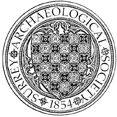Hyde Farm, Churt
A watching brief by A and D Graham on works within the standing Tudor building recorded a Bargate Stone lined well, dating to at least 1700, and a thin ashy layer containing 13th century coarse and white wares as well as fragments of ashlar masonry. These remains presumably relate to a medieval precursor to the existing building, known from documentary evidence. (294)


